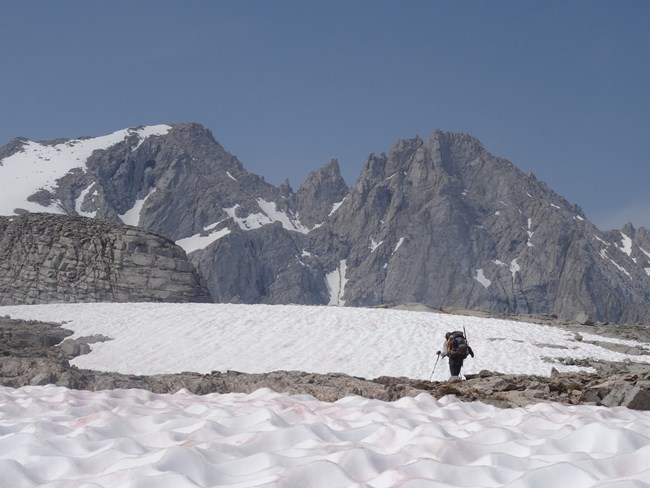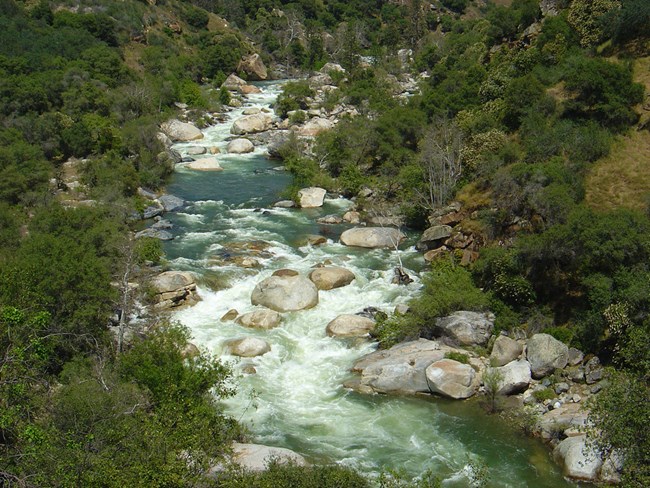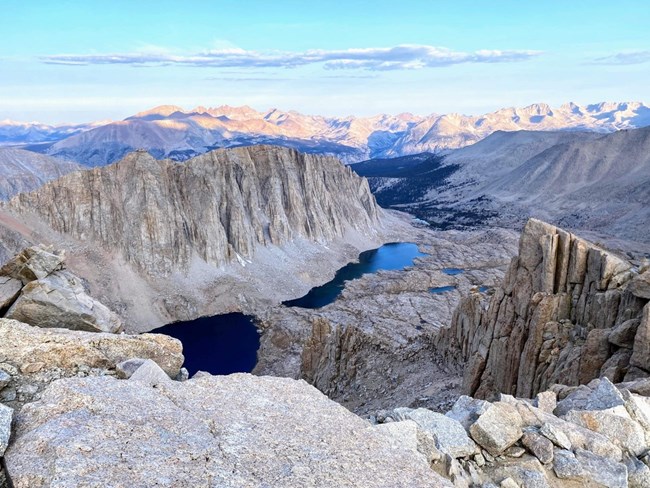|
Due to Sequoia and Kings Canyon’s record-breaking snowpack over the winter, it is especially important to properly prepare yourself before backpacking through the parks during the summer of 2024. Backpackers will need to be self-reliant and ready for risks such as snow hazards, swift water crossings and altitude sickness. 
NPS Photo - Mandy Holmgren, The Institute for Bird Populations' Snow HazardsBefore embarking on your trip, conduct a risk assessment to identify potential hazards and plan for ways to mitigate or avoid them. If at any point in your journey you feel unprepared, or that the danger is too high, turn around. Do not commit to an action from which you are not sure you can turn around. FOMO is not worth risking your life, especially in conditions such as this. Consider hazards such as:
Hikers must carry the appropriate tools (i.e. ice axe and crampons) and know how to use them. 
NPS Photo - Rick Cain Swift Water and River CrossingOnly experienced travelers should attempt to cross a wilderness river without the aid of a bridge. Be aware of your surroundings, your physical limits and skill level. Remember that in the wilderness you may be miles away from help. The snow-melt-fed rivers are icy cold and will rapidly deplete your energy, leading to hypothermia, shock, and potential drowning. The best way to limit your exposure to swift water danger is to NOT enter the rivers or attempt crossings. Don't be afraid to change your plans if you’re faced with a dangerous crossing, or any other risk that you cannot mitigate.
It is crucial to carry the appropriate gear and know how to use it correctly. Learn and practice crossing techniques before entering the wilderness. If you are unsure about the safety of the situation, turn back. Snow melt and river flow is less intense in the morning, making it safer to cross in the early hours of the day. Water levels typically peak in the late afternoon or early evening when the snow has been exposed to a full day of sun and heat. Increased temperatures cause increased melting and river swelling. The river you comfortably crossed in the morning may rise to dangerous levels by the time you return to it in the afternoon. Be prepared with extra food and overnight gear in case you’re delayed in returning. In a wilderness setting, the risks associated with swift water and stream crossings are even greater. 
NPS Photo - Elijah Nevarez Altitude SicknessMany of the park's attractions are situated at elevations over 8,000 feet, putting visitors at risk of acute mountain sickness and other elevation related emergencies. Altitude illness can affect anyone, regardless of age, gender, or fitness level.
Self-ReliancePreparedness and self-reliance are essential. Make sure to plan for all potential hazards before your trip. Pack the necessary equipment and clothing for the terrain and weather conditions you may encounter. Know your own physical limitations and plan your route accordingly. It is important to treat an SOS device as a tool of last resort. Do not use it to justify accepting more risk than you would without it. Ask yourself if you would continue with the activity if you didn't have the device. If the answer is no, do not proceed with the activity.
|
Last updated: September 11, 2024
